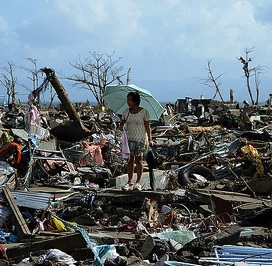
With death toll rising from the devastating typhoon in the Philippines this week, it seems that we’re constantly being reminded of the destruction of natural disasters, especially for rural and poor areas. Rural communities can be difficult to reach in times of environmental chaos, and poorer regions don’t always have the resources to cope with a crisis. When city services shut down or relief aid doesn’t come through immediately, community members band together to manage the aftermath of the disaster as best they can.
Sociologist Eric Klinenberg believes that community resources including “public places from libraries to mom-and-pop shops and coffee shops” can influence the outcomes of a crisis by providing the community the familiarity and support they need. In researching one such disaster, the 1995 Chicago heat wave, Klinenberg found that the residents of neighborhoods with more social infrastructure—like libraries and coffee shops—fared much better during the heat.
Those resources so dramatically improve the quality of our life on a regular day, but when there’s a heat wave or a hurricane or some other disaster, they can make the difference between life and death. In the Chicago heat wave, they did.
These types of social infrastructure benefit communities beyond times of crisis, according to Klinenberg who argues,
The nice thing about investing in climate security through social infrastructure is that the residual benefit is that we could dramatically improve the quality of life in these places all the time regardless of the weather. And it’s that kind of intelligent design that we desperately need at this moment.
![]()

Comments